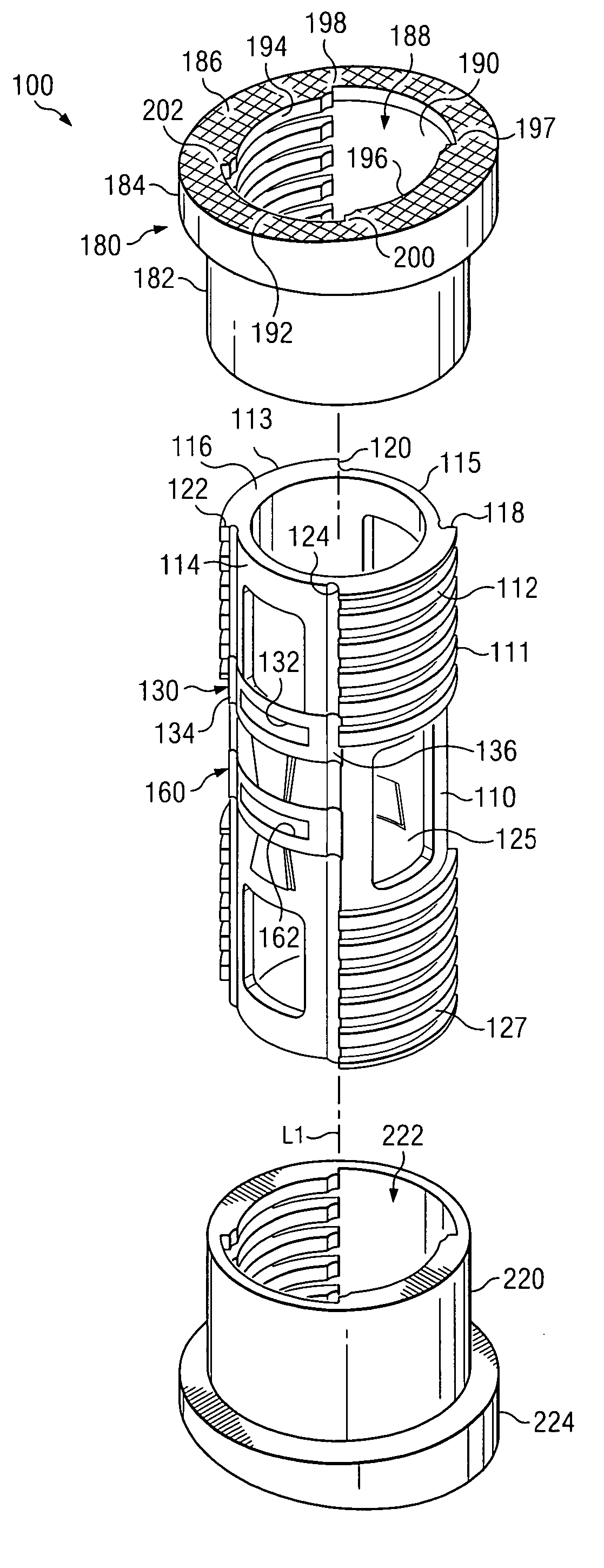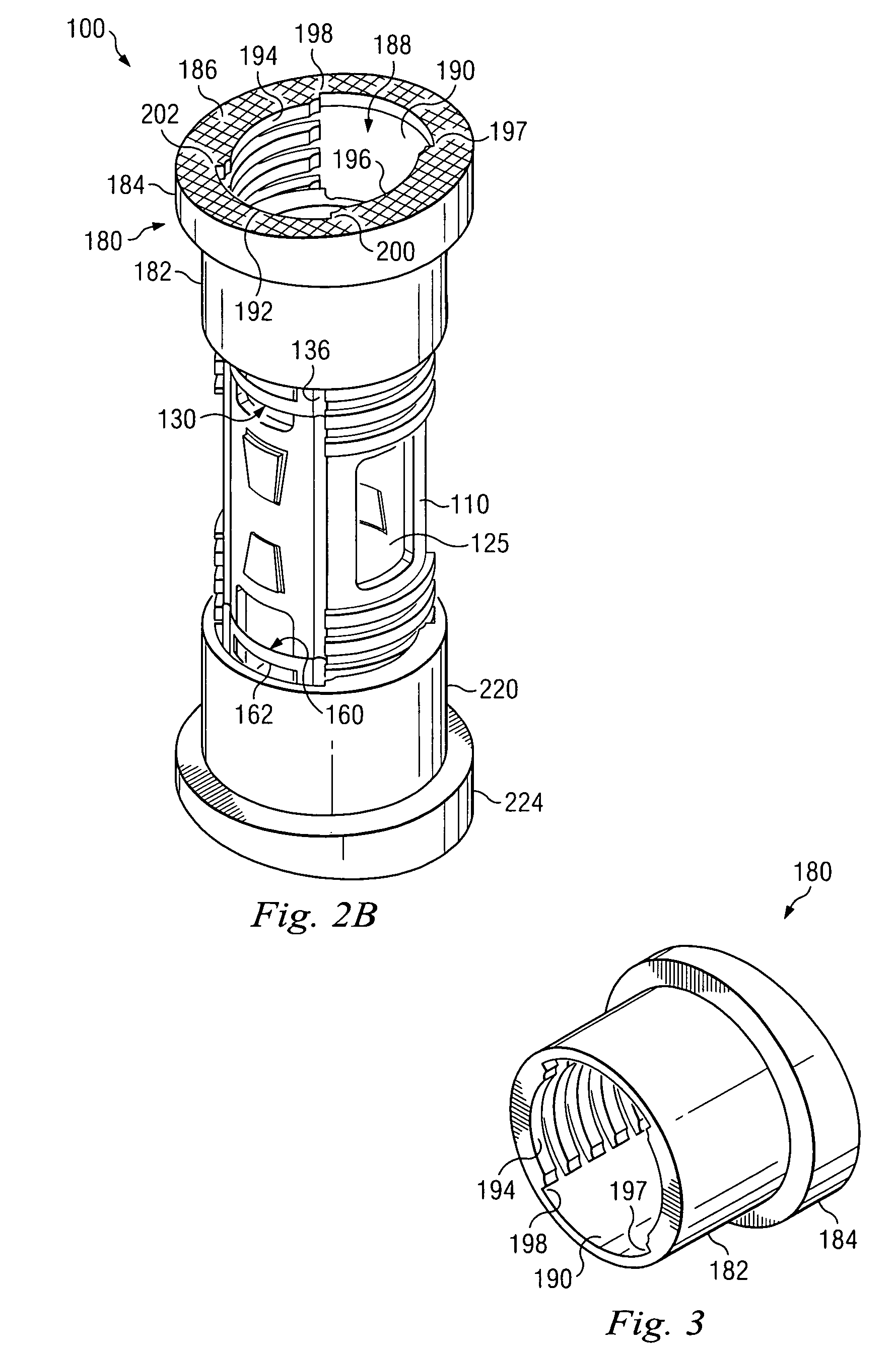Locking expandable implant and method
a technology of expandable implants and locking devices, which is applied in the field of expanding implants and methods for replacing skeletal structures, can solve the problems of damage to all or part of more than one vertebrae, and damage to one or more vertebra
- Summary
- Abstract
- Description
- Claims
- Application Information
AI Technical Summary
Benefits of technology
Problems solved by technology
Method used
Image
Examples
Embodiment Construction
[0020]For the purposes of promoting an understanding of the principles of the invention, reference will now be made to the embodiments, or examples, illustrated in the drawings and specific language will be used to describe the same. It will nevertheless be understood that no limitation of the scope of the invention is thereby intended. Any alterations and further modifications in the described embodiments, and any further applications of the principles of the invention as described herein are contemplated as would normally occur to one skilled in the art to which the invention relates.
[0021]Referring now to FIGS. 2A and 2B, there is shown an expandable implant 100 in accordance with one aspect of the present invention. The expandable implant 100 includes a tubular main body 110 with an upper portion 111. Upper portion 111 includes a first helically threaded area 112 extending over approximately one-quarter of the outer circumference of the device and an opposing helically threaded ...
PUM
 Login to View More
Login to View More Abstract
Description
Claims
Application Information
 Login to View More
Login to View More - R&D
- Intellectual Property
- Life Sciences
- Materials
- Tech Scout
- Unparalleled Data Quality
- Higher Quality Content
- 60% Fewer Hallucinations
Browse by: Latest US Patents, China's latest patents, Technical Efficacy Thesaurus, Application Domain, Technology Topic, Popular Technical Reports.
© 2025 PatSnap. All rights reserved.Legal|Privacy policy|Modern Slavery Act Transparency Statement|Sitemap|About US| Contact US: help@patsnap.com



